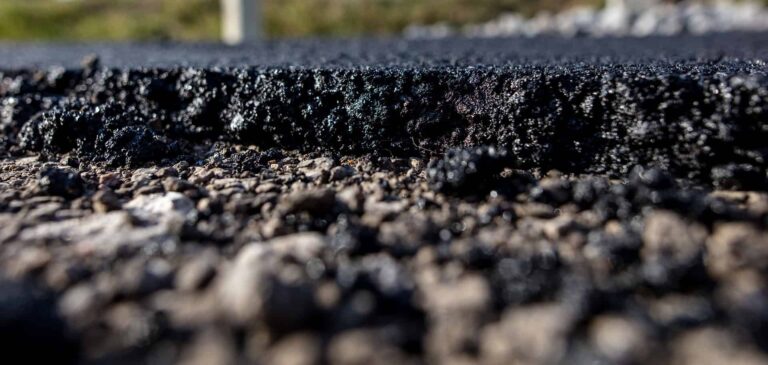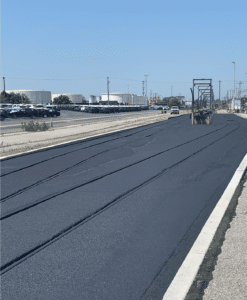There are a number of different blends of asphalt, which have different stress tolerances, granularities, and different thicknesses, but the really important aspect of any asphalt mix is how hot it is when it’s put down in place. This one factor determines the suitability for any type of asphalt mix for specific kinds of projects, so when you’re starting out a new project requiring asphalt, you should know which types of mixes are best suited for your kind of job. Here’s a breakdown of the most common asphalt mixes, and the types of projects which they’re best suited for.
Cold mix asphalt (CMA)
This type of asphalt contains a number of different additives and oils which allow for the possibility of having the asphalt mix to be stored and then laid down at a cold temperature. CMA mixing methods are constantly improving to make them more effective, but at the present time cold mix asphalt mixes are simply not quite as strong as a hot mix asphalt can be. For the most part, cold mix asphalt is used on patchwork, small and large potholes, and surfaces which do not see a high volume of usage.
Cold mix asphalt is not considered to be as durable or as strong as hot mix, and is often used by do-it-yourselfers for repair work and patch jobs. CMA asphalt will usually cost much less and will generally take much less time to put in place, and these types of mixes are used most often when making repairs during times of the year when it’s cool, wet, or extremely dry. Some commercial grade cold mix asphalt mixes can actually out-perform hot mixes, depending on how they are intended to be used. However, by and large, hot mix asphalt is considered to be the premium mix available on the market, and will always be your best bet on a project which requires a permanent, durable solution.
Warm mix asphalt (WMA)
This is probably the newest form of asphalt mix, and as you might expect, it’s something of a median between hot and cold mix asphalt. Warm mix asphalt can be laid down in cooler temperatures, and can be hauled over greater distances while still retaining its effectiveness. It can also still set correctly, even though the makeup of warm mix asphalt includes fewer petroleum products than hot mix asphalt does. Warm mix asphalt is used nowadays in approximately one third of all paving projects, and one of the reasons its popularity has grown because is because it’s much friendlier to the environment than other forms of asphalt. Warm mix asphalt is better for the environment because it produces far less fumes, dust, and smoke during the pouring process. Warm mix asphalt is generally produced at temperatures ranging between 200° and 250°F.
Hot mix asphalt (HMA)
Hot mix asphalt is the traditional and standard type of asphalt which most people know about, and have seen being put down by road crews. When hot mix asphalt is prepared, the aggregate materials and the binding material are heated to somewhere between 280° and 325°F, and are then laid down in an extremely hot condition. It is usually only possible to put down hot mix asphalt in the warmer months, because cooler weather can cause the base to cool down far too quickly, and to destabilize the asphalt itself. Hot mix asphalt is used on projects and jobs where permanent results are required, as opposed to a temporary fix or any type of patchwork installation. Under most conditions, hot mix asphalt will perform best and will be the sturdiest possible surface achievable on a project.







